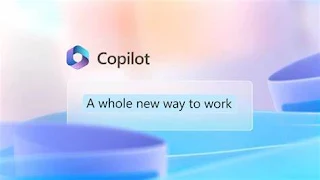Title: Microsoft Copilot: A Revolutionary AI-Powered Coding Assistant
Introduction
In today's fast-paced world of software development, every programmer seeks tools that can enhance productivity and streamline their coding process. Microsoft Copilot, a breakthrough AI-powered coding assistant, is one such tool that has been making waves in the tech community. In this blog, we will delve into the functionalities and benefits of Microsoft Copilot, exploring how it can revolutionize the way developers write code.
What is Microsoft Copilot?
Microsoft Copilot is an advanced AI-based coding assistant co-developed by GitHub and OpenAI. It harnesses the power of machine learning to provide real-time code suggestions and autocompletions while developers are writing their code. Copilot is built upon GPT-3, an immensely powerful language model developed by OpenAI, making it capable of understanding and generating code snippets in various programming languages.
How Does It Work?
The underlying technology of Microsoft Copilot involves a process called "pair programming with AI." When a developer starts typing code, Copilot instantly analyzes the context and suggests whole lines or blocks of code that might be relevant to the current task. It can even handle complex scenarios and generate code for repetitive tasks, saving valuable time and effort for programmers.
Language Support:
One of the most impressive aspects of Copilot is its wide range of language support. It can assist developers in multiple programming languages, including popular ones like Python, JavaScript, C++, Java, and many others. Regardless of the language you prefer, Copilot adapts to your coding needs seamlessly.
Learning and Improvement:
Microsoft Copilot's capabilities go beyond providing code suggestions based on patterns. It learns from the coding habits of users across the globe, continuously improving its suggestions and adapting to the latest programming trends. The more developers use Copilot, the smarter and more helpful it becomes over time.
Boosting Productivity:
By offering intelligent code completions, Copilot significantly boosts developers' productivity. It reduces the need to search for syntax or browse documentation, as it can instantly provide accurate and contextually relevant code snippets. This allows developers to focus on the logic and architecture of their applications instead of spending time on repetitive and mundane coding tasks.
Collaborative Coding:
Microsoft Copilot also fosters a collaborative coding environment. Whether you are working solo or as part of a team, Copilot can be an invaluable partner. It can complement your coding style and adapt to your team's workflow, making it easier for everyone to contribute efficiently.
Addressing Ethical Concerns:
With any AI-powered tool, ethical considerations are paramount. Microsoft Copilot, being built upon GPT-3, needs a responsible approach. It is essential for developers to review the generated code carefully, as Copilot's suggestions might not always be the most secure or optimal solutions. Being aware of potential biases in the model is crucial to maintaining code quality and security.
Conclusion:
Microsoft Copilot is a game-changer for developers, simplifying and accelerating the coding process through the power of AI. Its ability to understand context and provide relevant code suggestions holds immense promise for the future of software development. As developers continue to use and shape this groundbreaking technology responsibly, Microsoft Copilot is sure to transform the coding landscape, enabling faster, more efficient, and collaborative development workflows.



